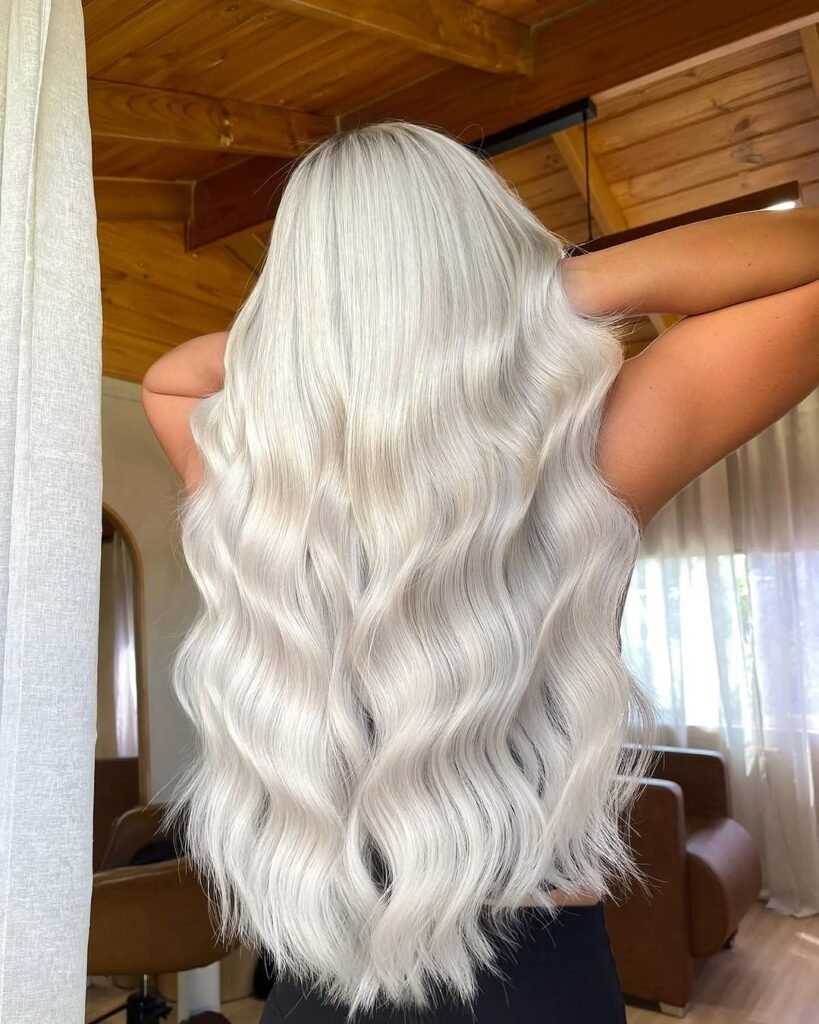
Think of this as your go-to guide for reviving damaged hair expert-backed, no fluff, just results grounded in science.
If your hair feels dry, brittle, or frizzy despite trying multiple products, it’s time to reexamine what’s inside your bottles. This ingredient guide for damaged hair highlights the most effective, research-supported ingredients, explaining how they work, how to use them, and where to find them.If you’re looking for a deeper conditioning treatment to pair with these ingredients, check out our Best Hair Masks for Damaged Hair guide. Get ready to fall back in love with your hair—let’s begin.
Why Understanding Ingredients Matters
Hair damage can result from heat styling, chemical processing, UV exposure, or environmental stress. Choosing treatments with proven active ingredients is essential to reversing damage effectively—not just masking it.
Top Ingredients to Repair Damaged Hair
Hydrolyzed Keratin — The Building Block of Hair
Why Use It: Hydrolyzed keratin replenishes broken protein bonds, boosts elasticity, and smooths frizz—perfect for brittle, overprocessed hair.
How to Use: Apply masks or leave-ins with hydrolyzed keratin weekly. Leave on clean, damp hair for 5–20 minutes, then rinse.
Where to Find It: Olaplex No.3 Hair Perfector
Evidence: Studies show hydrolyzed keratin can improve tensile strength and reduce breakage. (Int J Trichol, 2015)
Panthenol (Pro-Vitamin B5) — Hydration Hero
Why Use It: Panthenol draws moisture into the hair, seals it in, and smooths the cuticle for added shine.
How to Use: Use panthenol-containing shampoos, conditioners, or serums regularly—gentle enough for daily use.
Where to Find It: Briogeo Don’t Despair, Repair! Mask
Evidence: Clinical reviews support panthenol’s role in improving hydration and hair manageability. (J Cosmet Dermatol, 2010)
Argan Oil — Liquid Gold for Hair
Why Use It: Rich in fatty acids and vitamin E, argan oil nourishes the hair and scalp, reduces frizz, and adds softness.
How to Use: Apply 1–2 drops to damp or dry hair, focusing on ends. Use pre- or post-styling.
Where to Find It: Moroccanoil Treatment
Evidence: Argan oil has documented antioxidant and moisturizing effects beneficial for hair. (J Cosmet Dermatol, 2016)
Silk Amino Acids — Strengthen and Smooth
Why Use It: Silk amino acids penetrate the hair shaft to strengthen and improve flexibility.
How to Use: Use leave-ins or serums post-wash. Apply a small amount before styling.
Where to Find It: Amika The Kure Intense Repair Mask
Evidence: Lab studies suggest silk proteins improve hair’s mechanical properties. (J Cosmet Sci, 2013)
Ceramides — Rebuild Your Hair Barrier
Why Use It: Ceramides restore the hair’s protective barrier, locking in moisture and shielding against damage.
How to Use: Apply weekly using masks or deep conditioners containing ceramides.
Where to Find It: Kérastase Resistance Mask
Evidence: Ceramide use enhances moisture retention and improves hair’s protective barrier. (Int J Cosmet Sci, 2015)
Niacinamide — Scalp and Strand Savior
Why Use It: Niacinamide boosts circulation, supports scalp health, and strengthens hair at the root.
How to Use: Apply a niacinamide scalp serum nightly. Massage gently. No need to rinse.
Where to Find It: The Ordinary Multi-Peptide Hair Serum
Evidence: Research supports niacinamide’s ability to improve hair density and reduce inflammation. (J Dermatolog Treat, 2014)
Aloe Vera — Soothing and Restorative
Why Use It: Aloe vera hydrates, calms irritated scalps, and provides antioxidant vitamins A, C, and E.
How to Use: Apply aloe gel to scalp and hair. Leave 20–30 minutes before rinsing.
Where to Find It: Seven Minerals Aloe Vera Gel
Evidence: Aloe’s anti-inflammatory and moisturizing benefits are well-documented. (Indian J Dermatol, 2008)
Comparison Table: Damaged Hair Ingredients at a Glance
| Ingredient | Main Benefit | Best Use | Frequency |
|---|---|---|---|
| Hydrolyzed Keratin | Strengthen + smooth | Mask / leave-in | Weekly |
| Panthenol | Hydrate + shine | Conditioner / serum | Daily or as needed |
| Argan Oil | Nourish + protect | Oil | Daily / styling days |
| Silk Amino Acids | Strengthen + detangle | Leave-in / serum | After wash |
| Ceramides | Repair barrier | Mask / conditioner | Weekly |
| Niacinamide | Scalp health + growth | Scalp serum | Nightly |
| Aloe Vera | Soothe + hydrate | Gel / mask | 1–2x weekly |
Frequently Asked Questions
How often should I use these treatments?
Protein-based treatments work best weekly. Moisture-rich products are safe for daily or more frequent use depending on hair needs.
Can I combine multiple ingredients?
Yes! Balance protein and hydration for best results—for example, use a protein mask weekly and hydrating oils or serums between.
How soon will I see results?
Many people notice softer hair after 1–2 uses. Deeper repair usually takes 3–6 weeks of consistent care.
Conclusion
When it comes to restoring damaged hair, ingredients matter. Choose science-backed treatments, stay consistent, and watch your hair transform.

Chơi slots nhận thưởng chỉ với 3 biểu tượng trở lên. 3D slots, video slots, megaway slots, jackpot lũy tiến,… tất cả các dòng game quay hũ kinh điển nhất hiện nay đều có tại game 66b. Chúng tôi mang đến cho hội viên hơn 1.000+ vòng quay miễn phí với mức RTP cực cao.
Thanks for putting in the effort to write this.
slot365 xx vip – Cơn lốc mới trên bản đồ giải trí trực tuyến 2025, hứa hẹn khuấy đảo cộng đồng cược thủ yêu thích sự đẳng cấp và đổi mới. Đây, là điểm đến lý tưởng cho người chơi tìm kiếm cơ hội làm giàu, là biểu tượng cho xu hướng cá cược thời đại mới.
**breathe**
breathe is a plant-powered tincture crafted to promote lung performance and enhance your breathing quality.
**mind vault**
mind vault is a premium cognitive support formula created for adults 45+. It’s thoughtfully designed to help maintain clear thinking